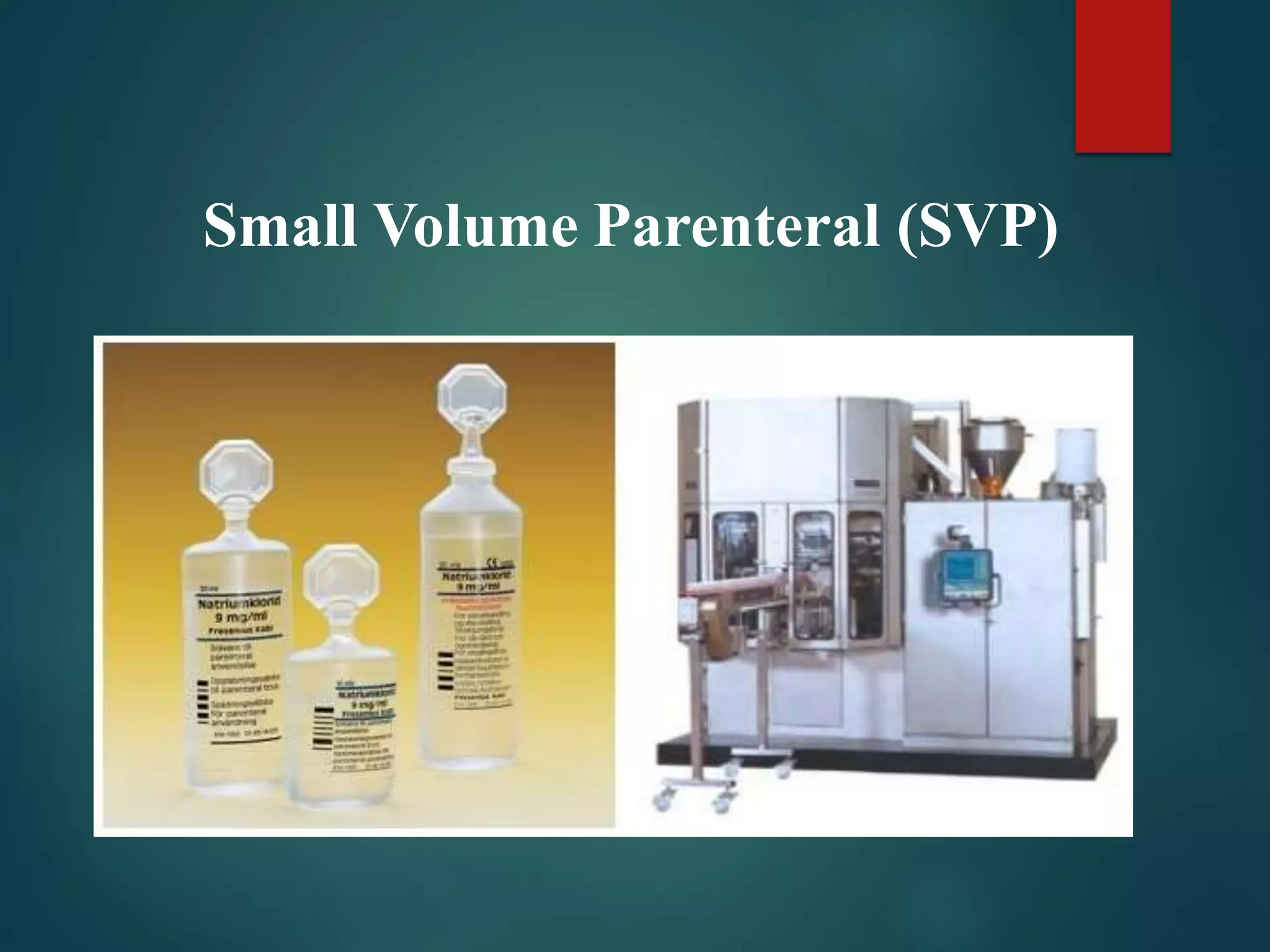This document provides information about small volume parenterals (SVPs), which are injections packaged in containers of 100ml or less. It discusses the formulation, ingredients, containers, sterilization, and manufacturing of SVPs. Specifically, it describes that SVPs can be aqueous or non-aqueous solutions administered intravenously. It also outlines various additives used in SVP formulations, including vehicles, solvents, buffers, and preservatives. The document discusses sterilization methods like heat, filtration, and radiation. It provides details on terminal sterilization and blow-fill-seal technology for SVP production.


































